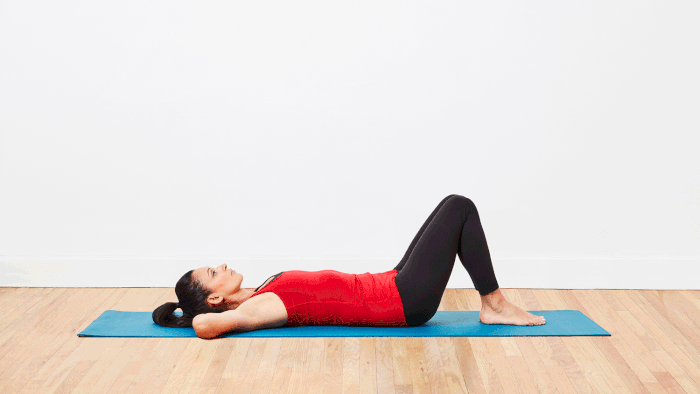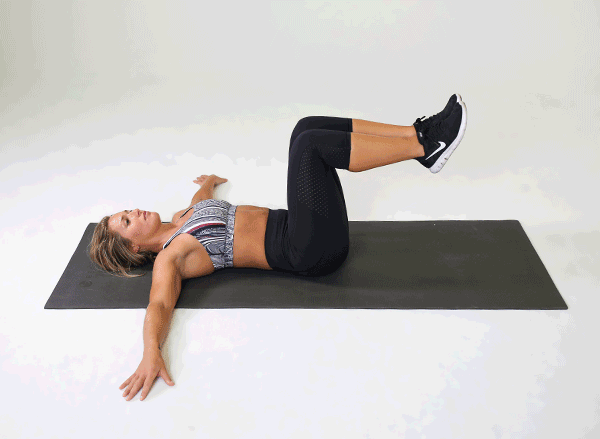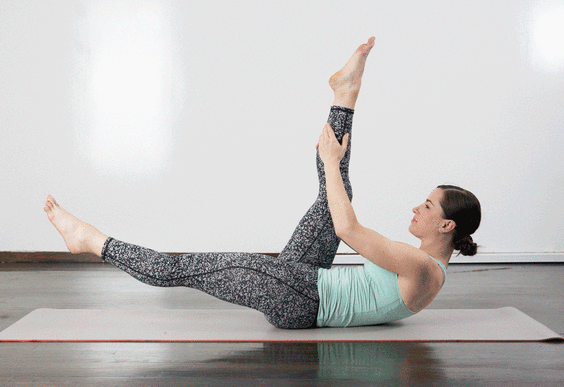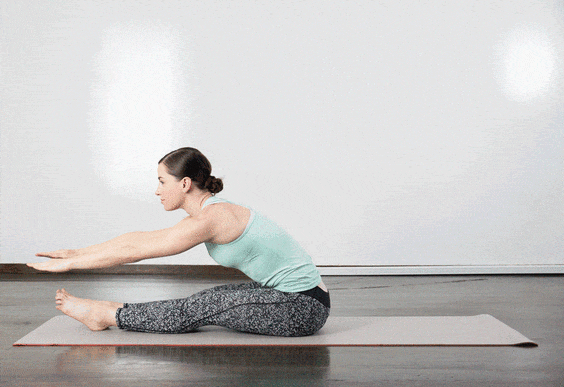Lower Back Pain (LBP) affects most people at some point in their lives. In a majority of cases, LBP can be significantly reduced or completely relieved with Pilates.
The combination of deep abdominal strengthening, postural awareness, and release and stretching exercises makes Pilates extremely effective in the prevention and treatment of LBP.
If you want to go straight to the 30-minute lower back pain class, click the button below.
Relieve Lower Back Pain With “The 6-Way Method”
The 6-Way Method is a combination of six simple exercises that, when combined, are proven by a 2016 meta study, to be a super effective way to relieve Lower Back Pain.
The Neutral Spine position taught in Pilates is used as the most functionally ideal or “perfect” posture for our bodies. The strong focus on core (deep abdominal) strengthening creates stronger support muscles for the spine. By implementing these techniques into your everyday life, you begin to fix the problem at the cause, rather than only treat the symptoms.
And these are the six exercises of “The 6-Way Method”. The exercises can be used as a guide to relieving non-specific LBP (i.e. not as a result of an acute injury or condition), and are recommended to be done daily to most effectively treat and prevent LBP.
1. Pelvic Curl

This simple but effective exercise gets the deep core muscle switched on and builds strength in the support system of the spine.
- Lie down on your back with your feet flat on the ground (hip-distance apart) and your knees bent . Your arms are at your sides with your palms down. Make sure to relax your shoulders, lower back, and neck.
- Inhale as you prepare, then exhale and gently curl the pelvis and then the spine off the mat, vertebra-by-vertebra.
- At the top, inhale and hold. Your pelvis should be at maximum tilt and you should feel a stretch in your hip flexors.
- Finally, exhale as you gently lower your spine. Rolling down vertebra-by-vertebra and returning to the starting position.
2. Chest Lift

Core and abdominal strengthening exercise.
- Lie on your back in Neutral spine, knees bent, feet flat on the floor and hands behind the head. Pelvic floor and other core muscles engaged.
- Breathe out and lift the head and chest keeping the stomach pulling flat (not doming toward the ceiling), and pelvis still (not tilting toward you.)
- Breathe in to lay the head back down.
Progression: Legs at table-top or The Hundred. Click here to find the best technique for you to do The Hundred.
3. Supine Spinal Twist

Rotation helps to stretch the back muscles and controlling this movement also helps to strengthen the oblique muscles to further support the spine.
- Lie on your back, knees bent, feet flat on the floor and arms stretched out to the sides.
- Keep knees squeezed together (you may want to use a towel to help), slowly take the knees over to one side, keeping shoulder blades in contact with the floor.
- Breathe out pulling your navel into your spine and drag the knees back to the centre.
Repeat the exercise 3-5 times to each side, alternating sides.
You may choose to also hold the stretch position for 10-15 seconds.
Progression: Legs at table top. Here’s a video to explain these exercises and more helpful exercises.
4. Hamstring Stretch
Stretching the Hamstrings helps to immediately relief tension in the back and continued stretching over time will help improve the posture in the lower back.

- Lie on back. One leg bent (foot flat on the floor) and other leg lifted straight towards the ceiling. (Use a towel or resistance band to hold leg up if needed)
- Keeping leg straight, pull the leg towards you as much as possible without twisting, until you feel a stretch.
- Keep breath flowing and try to relax. You should feel a stretch in the back of the thigh.
Hold for 15-20 seconds and then repeat with the other leg.
5. Roll Backs

Moving the spine using the abdominal muscles as done in this exercise, helps to not only stretch and relieve tension in the back muscles, but also helps to strengthen the core and abdominals. It immediately creates a greater ease of movement in the spine.
- Sit tall with the legs bent comfortably out in front and feet on the floor. Hands placed on the back of the thighs.
- Breathe out and begin curving the spine starting from the tailbone, rolling backwards until arms are straight and the whole spine is curved in a C-shape. You should feel as though the navel is the furthest point pulling backwards.
- Hold there and breathe in. Breathe out and bring the body forward, keeping the C-curve, until shoulders are over the hips, then stack the spine up to a straight, tall position. Repeat 6-10 times.
Tip: Try to keep the pelvic floor lifted and each vertebra lifted off one another throughout the entire exercise, rather than a sinking feeling into the curve.
6. Kneeling Arm and Leg Reach

This exercise works the entire stabilizing muscle system for the torso.
- Kneel on all fours, ensuring the hands are under the shoulders, the knees are under the hips, and the spine is in neutral.
- Without moving the torso at all, reach one arm forward and the opposite leg back keeping the finger tips and toes on the ground.
- Lift the extended arm and leg off the ground, keeping the navel pulled in to help stabilize the torso. Hold for a few second before bringing the hand and leg back down and to the start position.
If you’ve had to readjust, you will know if you have moved the torso during the exercise. Try to correct this with each repetition. Repeat 3-5 times each side.
If you find it too difficult to control the torso and spine when lifting the arm and leg, you can omit the lift until you have the strength in the core, or do the entire exercise but with arms and legs separately.
30-Minute “6-Way Method” Pilates Class To Relieve Lower Back Pain
Activate and strengthen your stabilizing muscles. A gentle class, ideal for those who suffer from lower back pain.
Safety
As always, it is recommended to consult your doctor or specialist before beginning a new exercise program if you do suffer from LBP. Depending on the cause, some exercises may not be advisory. In some cases, it may also be necessary to be under the supervised guidance of a qualified Pilates instructor.



